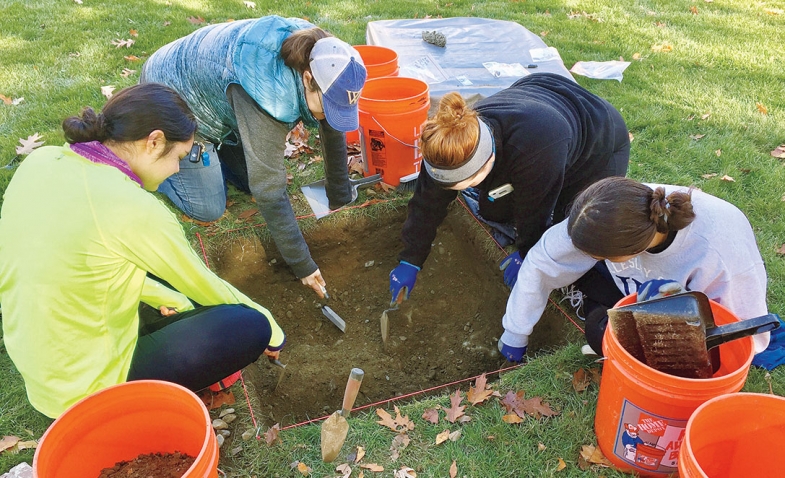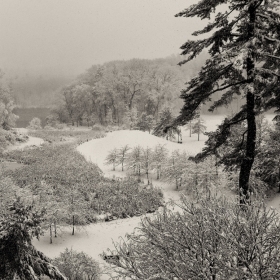Photo by Susan Ellison
Ever wonder just how hot the inferno was that destroyed College Hall in 1914? Thanks to the students of ANTH 103, we now know definitively:
- Hot enough to make the windows explode and change the metal mullions into metal droplets full of air bubbles, the result of melting and reforming in the air.
- Hot enough to turn window glass into something that looks like obsidian, the glassy black rock formed in volcanoes.
We know, because the students in Elizabeth Minor’s Introduction to Archaeology class last semester dug up the evidence, along with shards of dishes, an oyster shell, and the remains of a porcelain bud vase. And when we say dug up, we mean it: They moved and sifted two cubic meters of dirt, weighing about 3½ tons, at an on-campus archaeological dig last fall.
Ever since she was a student herself, Minor ’03, a Mellon Postdoctoral Fellow in Anthropology, has wondered what lies beneath the Tower Court complex (the approximate site of College Hall). In preparation for the dig, she used GIS technology to overlay the plans for College Hall on the current topography of Severance Hill. “You look for forgotten corners that don’t get cleaned as much or areas where there’d be high traffic—main doors and exits” in choosing sites to dig, she says. The spades went in the Lake House parking lot (site of the College Hall kitchen and the source of the oyster shell), the back corner of Claflin (lots of evidence that more contemporary students go there to smoke and have a beer), and in the Tower Courtyard, which yielded the largest number of historical objects.
Tara Kohli ’21 was particularly partial to the fragments they uncovered of blue transferware—white porcelain with a blue willow pattern. “On a later trip to the Wellesley College Archives, we were presented with a few plates and bowls and serving platters of an extremely similar design, which was very exciting!” she says.
Minor believes there may well be additional artifacts to be found, as post-fire photographs show piles of debris that were subsequently used as fill on the site when Tower was built. The dig will continue this summer, when she teaches ANTH 252, The Archaeology of Wellesley, during the College’s summer school session.
Alumnae are welcome to register for ANTH 252. Minor may be reached at eminor@wellesley.edu.






We ask that those who engage in Wellesley magazine's online community act with honesty, integrity, and respect. (Remember the honor code, alums?) We reserve the right to remove comments by impersonators or comments that are not civil and relevant to the subject at hand. By posting here, you are permitting Wellesley magazine to edit and republish your comment in all media. Please remember that all posts are public.